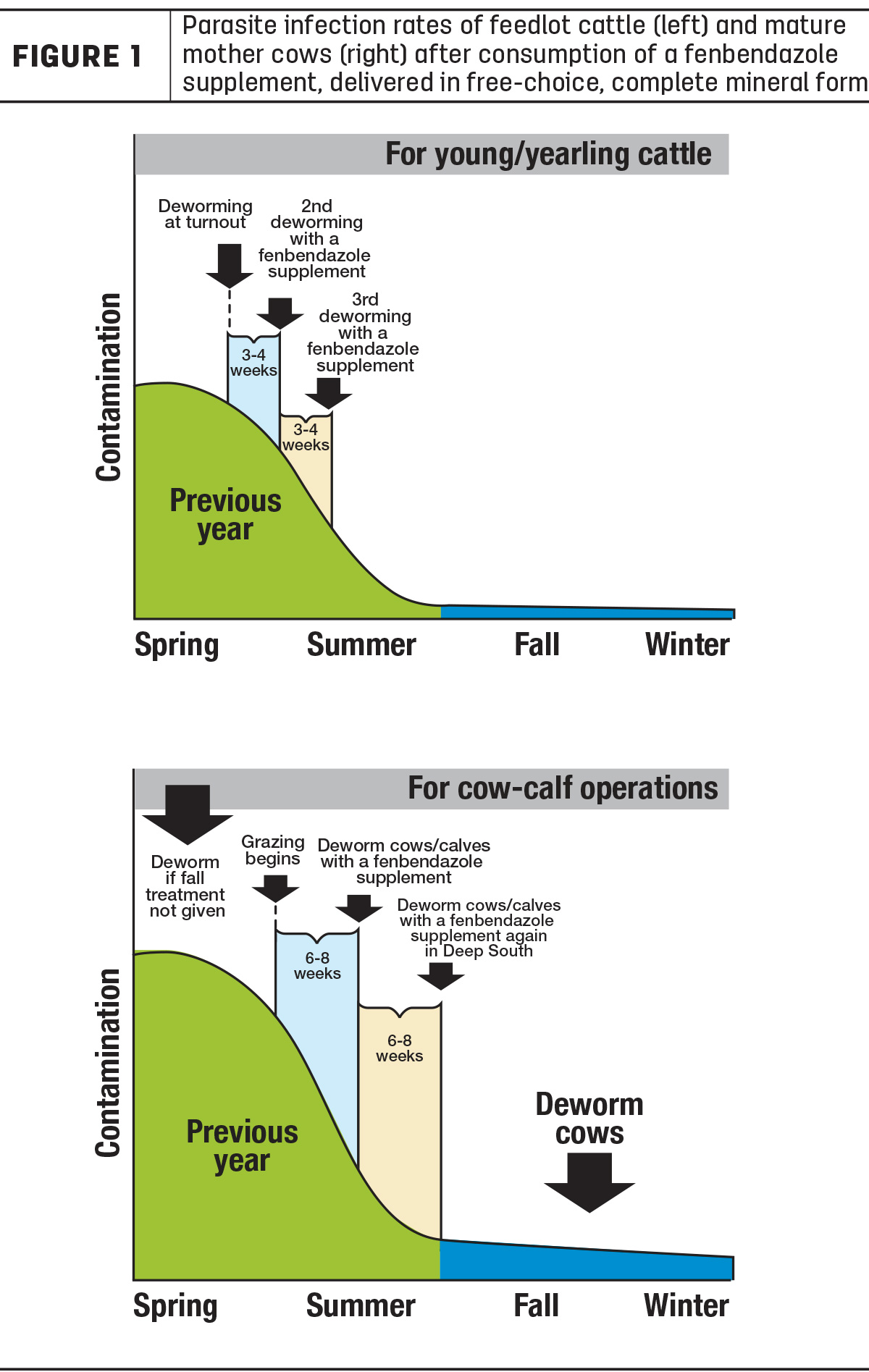Cattle are at risk of parasitic worm infection when they graze grasses. Even pastures that appear healthy may be infested with worms, making it crucial to take precautionary measures. Worms are resilient and can survive extreme weather conditions, such as freezing winters and scorching summers.
These worms enter the digestive tract as cattle graze infested forages, where they can harm the cow’s gut lining and cause changes in nutrient digestion. Parasitic infections not only decrease intake but also reduce nutrient absorption, which can adversely affect weight gain, milk production and reproduction. In addition to decreasing animal performance, worms can also impact cattle health. Immune resources are limited and are diverted to defend against this parasitic infection. This leaves the animal vulnerable to pathogenic bacteria and viruses. As such, cattle should be worm-free prior to vaccinations to allow proper immunization against viruses and bacteria. Of course, producers should consult with a veterinarian for the care of all animals during health challenges.
A study by Oklahoma State University assessed the health and performance benefits of deworming cattle on grass and at feedlot entry. Stockers that were dewormed with fenbendazole prior to grass turnout and again at 28 and 56 days post-turnout were 53 pounds heavier after 118 days than steers that were not dewormed. Upon feedlot entry, steers were either dewormed again with fenbendazole or were not dewormed. Cattle dewormed on pasture and feedlot entry were 130 pounds heavier at the end of the feedlot phase (an additional 121 days) than cattle that were never dewormed. Additionally, cattle that were dewormed on pasture and before feedlot entry had 2% morbidity and 0% death loss, while cattle that were not dewormed had 18% morbidity and 2% death loss. This research indicates that strategic deworming should be considered the foundation of any cattle health and nutrition program.
It is crucial to have an effective deworming plan in place to help control further parasite contamination. By administering dewormers at the right time, it is possible to interrupt the life cycle of parasites to reduce their numbers. When dealing with mature cows, it can take anywhere from six to eight weeks for worms to shed eggs back onto the pasture after being infected. Therefore, if cows are dewormed after a killing frost in the fall or winter, the best time to deworm them is six to eight weeks after greenup. For infected stockers, the life cycle from ingestion to parasite shedding is about four to six weeks, so it’s best to deworm them before they graze on grass, and then four to six weeks later. In some cases, it may be necessary to administer a third deworming treatment another four to six weeks after the second, to prevent recontamination.

A fecal egg count reduction test (FECRT) analyzes egg counts in feces as a measure of worm load in the animal. An FECRT can help producers determine if their cattle need to be dewormed and whether the deworming program is effective. Deworming is considered effective with a reduction in fecal egg counts of 90% or more. FECRT analysis has shown that pour-on dewormers reduce fecal egg counts by only about 51%, while injectable dewormers reduce fecal egg counts by about 58%. However, FECRT testing has found that fecal egg counts are reduced by over 98% after the use of a fenbendazole product.
Some products include fenbendazole as an active ingredient in a highly effective solution to deworm cattle in free-choice, complete mineral form. It is easier and more convenient for producers and less stressful for cattle than using chutes or corrals for deworming. This solution also provides cumulative deworming results: The parasites cannot excrete fenbendazole, so cattle that ingest even small amounts of such feed products over a few feedings will quickly build up to a lethal dose.
Strategic deworming is crucial for cattle producers to enhance profitability in cow-calf and stocker operations. An analysis of beef cattle production technologies reveals that using a dewormer in the cow-calf herd can add $201 per head to the cow’s profitability. This value addition is due to improved weaning weight on the calf and enhanced pregnancy rate on the cow. For stockers, the added value is $24 per head, primarily due to added weight gain. To ensure efficacy, use a quality dewormer at the right time to disrupt the parasite life cycle while providing essential minerals that support animal production. Consult a veterinarian to help design the optimal deworming program and keep cattle productive throughout the grazing season and in the feedlot.
References omitted but are available upon request by sending an email to the editor.











